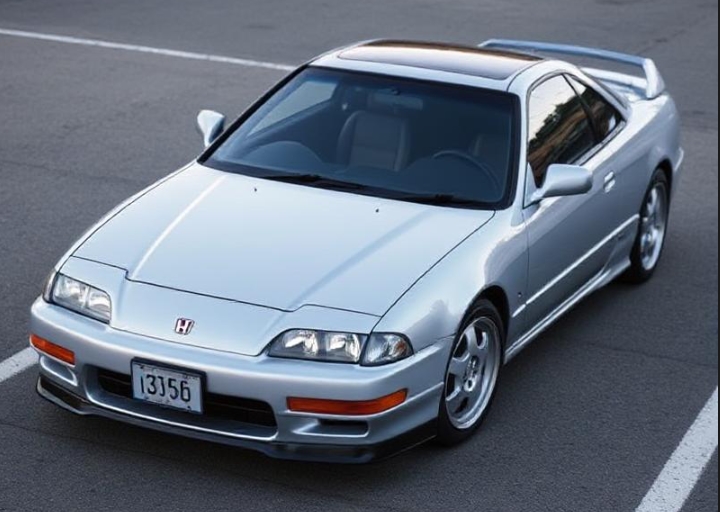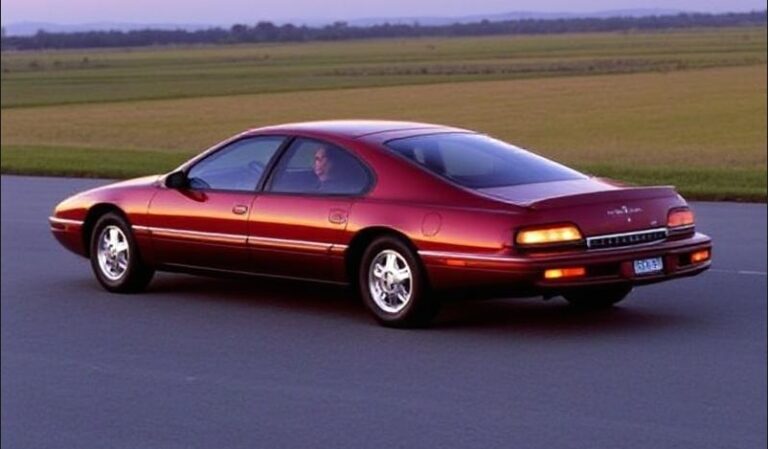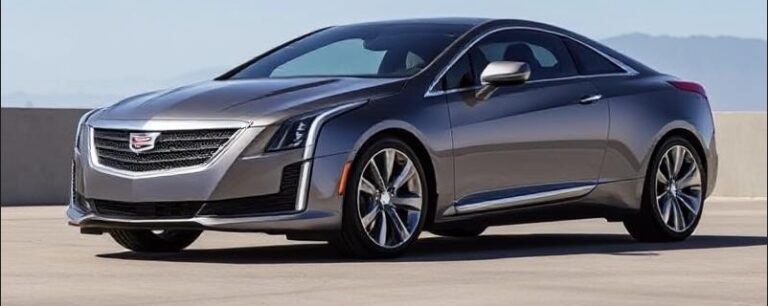Evolution of The Mazda MX-5
Of all the cars to achieve legendary status, few have done so with such humble, joyous simplicity as the Mazda MX-5. Known as the Miata in North America and the Eunos Roadster in its early Japanese life, this two-seat sports car did more than just sell well; it single-handedly resurrected the dormant market for affordable, open-top roadsters. For over three decades and across four distinct generations, the MX-5 has remained steadfastly true to its core philosophy: Jinba Ittai, a Japanese term meaning “rider and horse as one.” This principle of perfect harmony between driver and machine has guided every engineering decision, creating a car celebrated not for outright power, but for its sublime balance, telepathic handling, and the pure, unadulterated fun it delivers. This is the story of its evolution.
The Genesis: NA Generation (1989-1997) – The Pop-Up Headlight Icon
By the late 1980s, the classic British and Italian roadsters from marques like MG, Triumph, and Alfa Romeo had all but vanished, plagued by reliability issues and shifting market tastes. It was in this vacuum that Mazda, inspired by the vision of automotive journalist Bob Hall, embarked on a project to create a modern interpretation of the lightweight sports car. Debuting at the 1989 Chicago Auto Show, the result was an instant sensation.
The first-generation MX-5, codenamed “NA,” was a masterclass in minimalist design. Its clean, uncluttered lines, devoid of extraneous wings or vents, were charmingly simple. Its most defining feature, the retractable pop-up headlights, gave the car a friendly, almost animated character. Underneath its steel skin was a lightweight chassis, weighing a mere 940 kg (2,070 lbs), with a front-mid engine layout and rear-wheel drive. This configuration, combined with double-wishbone suspension at all four corners, gave the car a near-perfect 50:50 weight distribution, which was the secret to its legendary handling.
Initially, the NA was powered by a 1.6-litre DOHC inline-four engine, producing 115 horsepower. While not a powerhouse, the engine was rev-happy and perfectly matched to the car’s light weight, making it feel quick and responsive. In 1994, Mazda introduced a larger 1.8-litre engine, increasing output to 128 hp (later 133 hp), which provided a welcome boost in torque and mid-range performance.
.
THIS could come in handy for your auto garage (and everywhere else!):

.
Models and Trim Levels:
- Base Model: The purest form of the MX-5, often sold with steel wheels and manual steering to keep the price down and driver feedback high.
- Package Options (North America): Mazda typically offered “A,” “B,” and “C” packages.
- A Package: Added essentials like power steering, a leather-wrapped steering wheel, and alloy wheels.
- B Package: Built on the A Package, adding power windows, cruise control, and headrest speakers.
- C Package: The premium option, typically including a tan leather interior and a matching tan soft top.
- Special Editions: The NA generation is famous for its numerous special editions, which have become highly collectible. Notable examples include:
- Special Edition (1991): Finished in British Racing Green with a tan leather interior, this was the first of many iconic BRG Miatas.
- M Edition (1994-1997): A yearly premium model featuring unique paint colours (e.g., Montego Blue, Starlight Mica), special wheels, Nardi wood trim, and a Torsen limited-slip differential (LSD).
- R Package (1994-1997): A factory-prepped performance model for autocross enthusiasts, featuring Bilstein shock absorbers, underbody spoilers, and no power steering for maximum road feel.
The Refinement: NB Generation (1998-2005) – Losing the Pop-ups, Gaining Muscle
For its second act, the MX-5 underwent a significant evolution. The NB generation, introduced for the 1999 model year, was built on a modified version of the original platform, featuring a stiffer chassis and improved aerodynamics. The most controversial change was the deletion of the pop-up headlights, a casualty of tightening pedestrian safety regulations. In their place were fixed, teardrop-shaped headlights that gave the car a more modern and muscular look. The body was more curvaceous, with subtle power bulges on the hood and more defined fender flares.
The 1.8-litre engine became the standard in most markets, now producing around 140 horsepower thanks to a revised cylinder head. A mid-generation refresh in 2001 (often called the NB2) introduced variable valve timing (VVT), bumping power to 142 hp (in the US) and improving the powerband. A six-speed manual gearbox became available on higher-trim models, offering tighter gear ratios for more spirited driving.
This generation also saw the introduction of the most powerful factory-produced MX-5 ever.
Models and Trim Levels:
- Base: The entry-level model, carrying over the ethos of the original.
- LS: The luxury-oriented trim, typically including features like leather seats, a Bose audio system, and a Torsen LSD.
- Special Editions: The tradition of special editions continued with popular models like:
- 10th Anniversary Model (1999): A highly sought-after model in Sapphire Blue Mica, featuring a unique six-speed manual transmission, Bilstein shocks, and polished five-spoke wheels.
- Shinsen Version (2003): Offered in distinctive colors with unique interior touches.
- Mazdaspeed Miata (2004-2005): The undisputed hero of the NB generation. Developed by Mazda’s in-house tuning division, this was the only factory-turbocharged MX-5. Its 1.8-litre engine produced a potent 178 horsepower, transforming the car’s character. It was also equipped with upgraded suspension, larger wheels, and subtle aerodynamic enhancements. The Mazdaspeed was a raw, thrilling machine that finally gave the MX-5 the power many enthusiasts had craved.
The Modern Era: NC Generation (2005-2015) – Growing Up, But Not Old
The third-generation MX-5 marked the car’s most significant departure from its predecessors. The NC was based on an entirely new platform, sharing some architectural elements with the Mazda RX-8. It was larger, wider, and heavier than the NA and NB, a necessary evolution to meet modern safety standards and accommodate more creature comforts. Despite the increase in size, Mazda’s engineers worked tirelessly to maintain the car’s core principles, achieving a 50:50 weight distribution and preserving its nimble character.
The design was more contemporary, with pronounced fender flares that gave it a more planted, athletic stance. Under the hood was a new 2.0-litre MZR inline-four engine, delivering a healthy 170 horsepower. The NC’s true masterstroke, however, was the introduction of the Power Retractable Hard Top (PRHT) in 2007. This brilliantly engineered hardtop could fold into the same space as the soft top in just 12 seconds, offering the security and quietness of a coupe without compromising trunk space—a feature that proved immensely popular.
Models and Trim Levels:
- SV / Sport: The entry-level trims, providing the core MX-5 experience.
- Touring: A mid-range option that added features like fog lights, cruise control, and upgraded audio.
- Grand Touring: The top-tier model, loaded with luxury features like leather heated seats, automatic climate control, and a premium Bose sound system.
- Club: Introduced in later years, this trim was aimed at the enthusiast. It combined the features of the Touring model with performance upgrades like Bilstein shocks, an LSD, and a front shock tower brace.
The NC had the longest production run and received two facelifts (NC2 in 2009 and NC3 in 2013) that brought cosmetic updates, including a revised front fascia, and minor mechanical refinements.
The Return to Roots: ND Generation (2015-Present) – Back to Basics, Perfected
With the fourth-generation ND, Mazda staged a remarkable return to the original’s ethos. Guided by a “gram strategy,” engineers scrutinized every component to shed weight. The result was a car that was shorter, lower, and over 100 kg (220 lbs) lighter than the NC, bringing its curb weight back down to levels approaching the original NA.
The design was a radical departure, embracing Mazda’s “KODO – Soul of Motion” design language. The ND is aggressive and compact, with sharp lines, menacing LED headlights, and a purposeful stance. Inside, the cabin is driver-focused and elegantly modern.
Power comes from Mazda’s SKYACTIV-G engines. Most markets receive a choice between a rev-happy 1.5-litre engine or a more powerful 2.0-litre unit. In 2019, the 2.0-litre engine received a major update (creating the ND2), raising its redline and increasing output from 155 to a thrilling 181 horsepower, which many critics hailed as the perfect amount of power for the chassis.
In 2017, Mazda once again reimagined the hardtop with the MX-5 RF (Retractable Fastback). Instead of a full convertible, the RF features a targa-like roof panel that retracts beneath stunning flying buttress C-pillars. It offers a unique coupe profile when closed and an open-air experience when retracted, proving Mazda’s innovative spirit was as strong as ever.
Models and Trim Levels (North America):
- Sport: The pure, back-to-basics model, perfect for those who value simplicity.
- Club: The enthusiast’s choice, equipped with a limited-slip differential (manual only), Bilstein shocks, and a front air dam. An optional Brembo/BBS/Recaro package adds serious braking and handling hardware.
- Grand Touring: The premium model, offering leather upholstery, advanced safety features, navigation, and automatic climate control, without sacrificing the car’s dynamic soul.
- Special Editions: The ND continues the tradition with standout models like the 30th Anniversary Edition (2019) in Racing Orange and the 100th Anniversary Edition (2020) in Snowflake White Pearl with a red interior.
An Enduring Legacy
For over thirty years, the Mazda MX-5 has proven that a sports car is defined not by horsepower figures or lap times, but by the connection it forges with its driver. From the simple, winking face of the NA to the high-tech, lightweight sophistication of the ND, each generation has adapted to its time while fiercely protecting the Jinba Ittai spirit. Having sold well over one million units, it is officially the best-selling two-seat sports car in history. But its true legacy lies in the countless smiles it has put on faces and the pure, unfiltered joy of driving it delivers on a winding road, top down, with nothing but the journey ahead.







